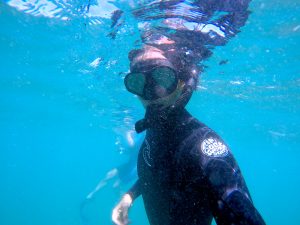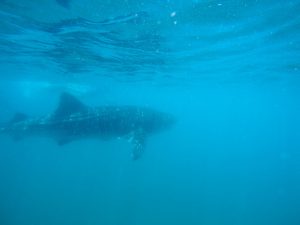Today finalizes the Whale Shark module of the program. It has been unreal being face to face with these gentle giants. The first time I saw a whale shark I remember I couldn’t move and was just admiring the peacefulness of the animal. We were in charge of taking Photo ID’s of the side of the shark making sure we could show the white dots going from the gills to behind the first dorsal fin. This is because we would then submit those photos to a worldwide database that measures the distances from the dots and then identifies if the shark is a new sighting or of it’s been spotted on a previous encounter. Another thing that we had to learn was measuring the shark with the use of a GoPro attached to a rig with two lasers on either side. This was particularly hard because sometimes conditions were not the best at sea and it was hard to locate the lasers while making sure the entire animal could fit into the shot. Another particularly important thing to remember was that we had to avoid pointing the laser at the eyes since this could cause damage. The third part of the monitoring included visual observations of any lacerations, amputations, or markings that we could identify that would help isolate the sharks in order to see if they were seen before or they were a new sighting. The season is almost over in La Paz bay and most of the sharks that aggregate here are male juveniles of around 7m in length I am learning more and more of how important it is to be respectful of these creatures and to make sure we are taking steps, however small, into protecting them for future generations where they can thrive like they use to.


Tomorrow we will have an entire day of exciting lectures where we will learn about shark biology, Cabo Pulmo National Park, and shark tourism and conservation.
